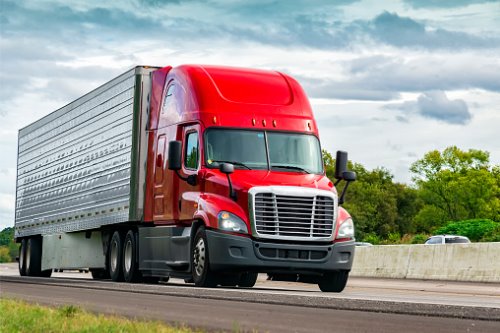

The current commercial auto insurance market is expected to continue firming over the second half of 2020, according to a new report from Risk Placement Services (RPS).
The sector continues to struggle with challenges that have influenced premium rates over the past 10 years, plus the impact of the COVID-19 pandemic.
“While coronavirus breathed temporary life into some segments of transportation, it halted activities in other areas,” RPS said. “What remains to be seen is the pandemic’s effect on losses during the remainder of the year.”
“Insurance carriers have struggled for so long from a loss perspective, and the pandemic has allowed them to catch up a little,” said Mark Gallagher, RPS national transportation practice leader. “But it’s more of a reset than an ability to lower rates and bring a soft market.”
Years of underperforming combined ratios have forced carriers to pass on double-digit premium rate increases, RPS said. Rates have risen 10%-15% year over year since 2010. The trucking industry has had the greatest influence on the rise in premium rates, due to its constant exposure with trucks on the road every day. Other rate drivers include an aging workforce, a shortage of drivers, nuclear verdicts, freight demand, maintenance expenses, poor infrastructure, and distracted driving.
There is also limited capacity in the standard market, especially for distressed fleets with poor loss experience and unacceptable safety scores, RPS said. “This has led to a greater reliance on transportation specialists in the E&S market,” the company said.
Other highlights from RPS’s U.S. Transportation Market Outlook include:
Trends in trucking
Fleets have advantages in pricing over non-fleets, according to RPS. While fleets usually have higher limits, they also take on more risk with higher deductibles and self-insured retentions than non-fleet companies. The report found that medium fleets of 20-50 units had greater budgets to commit to safety and compliance than small fleets.
Fleets also tend to be loyal to their insurance carrier, which can also lead to favorable pricing.
“Long-tenured fleet clients with good loss control and professionally managed operations will typically see less of an increase in premiums,” said Andrey Miterin, RPS transportation and commercial auto manager for the Northeast/Mid-Atlantic Region.
Other trends in the trucking sector:
Trends in public auto
Non-emergency medical transportation is one of the fastest-growing classes of business in public auto, but due to the health risks of passengers and the safety equipment on board, it’s also harder to place, resulting in tightened terms and conditions.
Ridesharing is another rapidly evolving class of business, according to RPS. While insurance carriers have been slow to provide coverage, Gallagher predicted that would change soon.
“Insurance carriers are learning how to adapt to the trend, and as they become more comfortable, more markets will open up,” he said.
Coverage gaps
Thin profit margins prevent many trucking companies from purchasing extra insurance coverage, including cyber and excess, even though they’re aware of the financial consequences of refusing coverage, the report found.
Trucking is increasingly being targeted by cyberattacks, with the biggest threat being ransomware, according to Steve Robinson, RPS national cyber practice leader.
Agents should “change the narrative for cyber insurance away from the data breaches and toward business continuity,” Robinson said. That includes helping transportation clients understand their dependence on technology, as well as the revenue that would be lost if a cyberattack froze their systems for several days.
Another important, but often overlooked, coverage is excess insurance, according to RPS. Most small trucking companies only purchase excess liability coverage if required by a direct shipper of third-party logistics. While larger fleets are more likely to carry excess coverage, many do not, largely due to cost, RPS said.
Outlook
In response to the impact of COVID-19 on certain transportation segments, carriers have reduced premiums, deleted units, or waived monthly minimum reporting for mileage, receipts or units, RPS reported. While these adjustments help in the short term, there are also measures that can be taken to help transportation clients remain profitable in the long term, stressing a focus on safety.
“Safety scores are the gatekeeper in determining pricing,” said Mike Mitchell, RPS area president, transportation practice, Southeast Region. Poor safety scores can lead to a denial of coverage, and a loss of leverage in jury awards against a company.
“Therefore, it is pertinent for transportation companies to invest in and commit to using telematics, appoint a safety director and hire quality drivers, as well as properly document all safety measures,” RPS said.
“When there are losses, insurance carriers want to see corrective measurements in place,” Miterin said. “They will ask, ‘Is leadership investing time and money into long-term safety improvements, or are they only implementing measures until the losses improve?’”
Proper documentation streamlines the process to obtain insurance quotes, RPS said.
“It is instrumental for agents to provide us with enough narrative and background on the attributes of the truck line and any improvements their clients are making, to help us place their business with our carrier partners,” Gallagher said.
